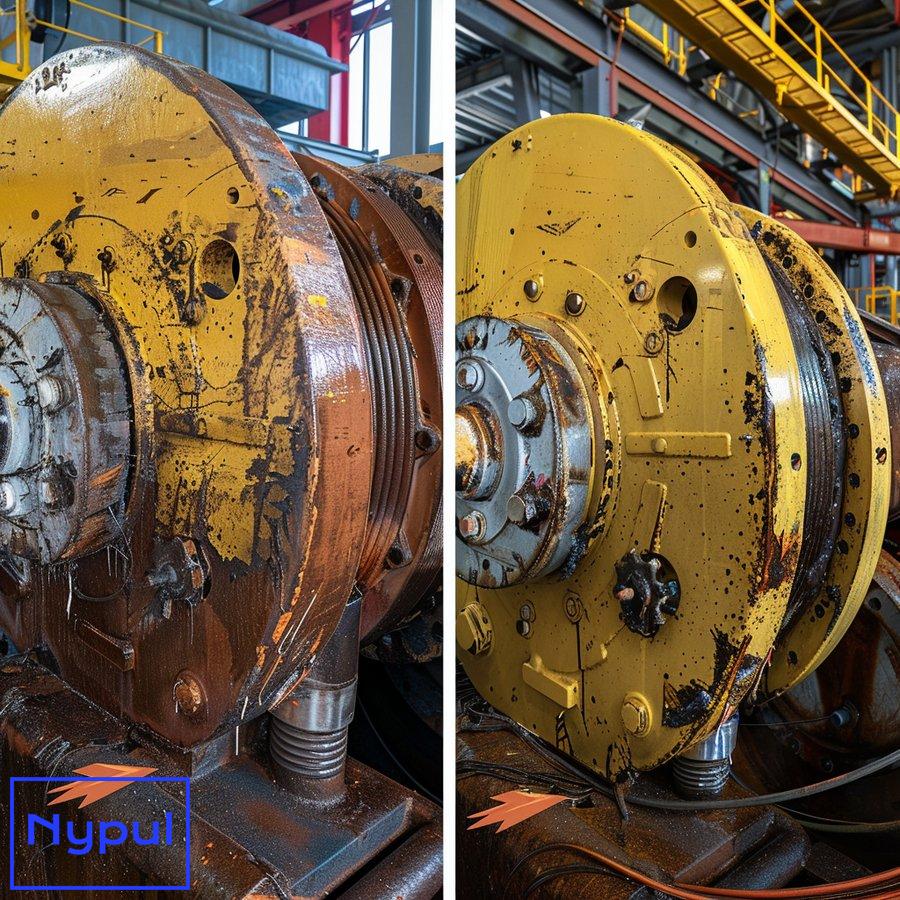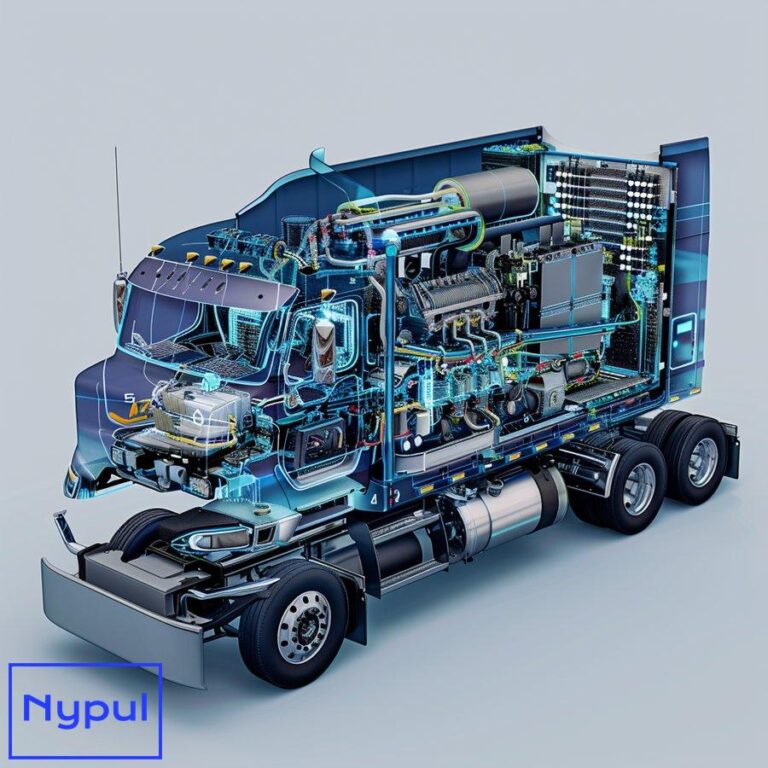What Are Four Inspection Requirements for Intermodal Equipment
What are intermodal equipment inspections and why are they important?
Intermodal equipment inspections are a critical part of ensuring the safety and roadworthiness of intermodal chassis and containers. These inspections help identify any defects or maintenance issues that could pose a risk to drivers, cargo, and other motorists on the road.
Intermodal equipment providers (IEPs) and motor carriers both have responsibilities when it comes to inspecting and maintaining this equipment. IEPs must systematically inspect, repair, and maintain all intermodal equipment under their control, while motor carriers and drivers must conduct thorough pre-trip inspections before operating the equipment on the road.
Regular inspections are essential for several reasons:
Safety: Identifying and addressing mechanical issues helps prevent accidents caused by equipment failure, protecting drivers and the public.
Compliance: Inspections ensure that intermodal equipment meets Federal Motor Carrier Safety Administration (FMCSA) regulations, avoiding fines and penalties.
Efficiency: Well-maintained equipment reduces breakdowns and delays, keeping cargo moving smoothly through the supply chain.
Liability: Properly documenting inspections and repairs can help determine responsibility in the event of an accident or cargo damage claim.
By prioritizing intermodal equipment inspections, IEPs and motor carriers demonstrate their commitment to safety, compliance, and operational efficiency.
What components must be checked during pre-trip inspections?
Before transporting an intermodal chassis and container, drivers must conduct a thorough pre-trip inspection to ensure the equipment is in good working order. The FMCSA requires drivers to inspect the following components:
Brakes:
– Service brake components that are readily visible
– Trailer brake connections
Lighting devices, lamps, markers, and conspicuity marking material
Wheels, rims, lugs, and tires:
– Check for proper inflation, tread depth, and any signs of damage
Air line connections, hoses, and couplers:
– Ensure gladhands are locked and seals are intact
– Check for air leaks
King pin upper coupling device:
– Verify that the pin is locked and the chassis is properly secured
Rails or support frames
Tie down bolsters
Locking pins, clevises, clamps, or hooks
Sliders or sliding frame lock
In addition to these required components, drivers should also check:
Chassis inspection sticker: Ensure it is present and not expired. If missing or expired, request a new inspection or chassis.
Container cleanliness and integrity: Check for debris, holes, or openings that could affect the cargo. Perform a light test to identify any gaps.
IEPs must provide drivers with sufficient space to conduct these inspections and have procedures in place to repair or replace any equipment with identified defects before the driver departs.
How often are annual inspections required and what do they entail?
Annual inspections are a crucial aspect of maintaining the safety and roadworthiness of intermodal equipment. The FMCSA requires IEPs to ensure that each intermodal chassis undergoes a comprehensive inspection at least once every 12 months.
During an annual inspection, a qualified inspector must examine all components listed in Appendix A to Part 396 of the FMCSA regulations. This includes a thorough check of the following systems:
| System | Components |
|---|---|
| Brake System | Service brakes, parking brake, brake drums, brake hoses, brake tubing |
| Coupling Devices | Upper coupler, kingpin, pintle hooks, drawbar, eye, drawbar tongue, safety devices |
| Exhaust System | Exhaust system leaks, mounting, exhaust components |
| Frame | Frame members, tire and wheel clearance, adjustable axle assemblies |
| Fuel System | Visible fuel tank and lines |
| Lighting Devices | All required lamps, reflectors, and electrical wiring |
| Safe Loading | Tie downs, rail securement |
| Steering Mechanism | Steering wheel and column, front axle beam, steering gear box, pitman arm, power steering, ball and socket joints |
| Suspension | Axle attachment, spring assembly, torque/radius rod |
| Tires | Tread depth, sidewall condition, inflation pressure |
| Wheels | Rims, lock rings, wheels, fasteners |
After completing the annual inspection, the inspector must document that each component has passed. This documentation can be in the form of an inspection report or a sticker/decal affixed to the chassis, containing the following information:
- Date of inspection
- Name and address of the IEP or other entity where the inspection was performed
- Information uniquely identifying the equipment, such as the VIN or chassis number
IEPs must not tender any intermodal equipment to a motor carrier for interchange unless it has passed an annual inspection within the preceding 12 months and the documentation is present on the vehicle.
What information should be included in Driver Vehicle Inspection Reports (DVIRs)?
Driver Vehicle Inspection Reports (DVIRs) are an essential part of the communication process between drivers and IEPs regarding the condition of intermodal equipment. If a driver discovers any defects or deficiencies during their pre-trip inspection or while operating the equipment, they must report these issues to the IEP when the equipment is returned.
A DVIR must include the following information:
Equipment details:
– Chassis or container number
– Carrier name
– Date and time of the report
Defects or deficiencies: A list of any issues found with the equipment, specifically addressing:
– Brakes
– Lighting devices, lamps, markers, and conspicuity marking material
– Wheels, rims, lugs, and tires
– Air line connections, hoses, and couplers
– King pin upper coupling device
– Rails or support frames
– Tie down bolsters
– Locking pins, clevises, clamps, or hooks
– Sliders or sliding frame lock
Driver information:
– Driver’s name (printed legibly)
– Driver’s signature
– Location where the driver discovered the defect or deficiency
If no defects or deficiencies are found, a DVIR is not required.
Upon receiving a DVIR, the IEP must certify on the original report that the reported defects or deficiencies have been repaired or that repair is unnecessary before allowing the equipment to be operated again. The IEP must retain the original DVIR and the certification of repairs for three months.
This process ensures that any issues with intermodal equipment are promptly addressed, maintaining the safety and efficiency of the transportation network.
How do systematic maintenance inspections differ from other requirements?
Systematic maintenance inspections are a proactive approach to maintaining the safety and roadworthiness of intermodal equipment, differing from other inspection requirements in several key ways.
Responsibility: IEPs are solely responsible for conducting systematic maintenance inspections on all intermodal equipment under their control. In contrast, pre-trip inspections and DVIRs involve both drivers and IEPs.
Frequency: Systematic maintenance inspections are conducted on a regular schedule determined by the IEP, based on factors such as equipment age, usage, and manufacturer recommendations. Pre-trip inspections and annual inspections have specific frequencies mandated by the FMCSA.
Scope: Systematic maintenance inspections cover a wide range of components and systems, going beyond the specific items listed in the FMCSA regulations for pre-trip and annual inspections. This allows IEPs to identify and address potential issues before they become serious problems.
Documentation: IEPs must maintain records of all systematic maintenance inspections, repairs, and maintenance performed on each piece of intermodal equipment. These records must be kept for the life of the equipment while under the IEP’s control, plus an additional six months. In comparison, DVIRs and annual inspection documentation have shorter retention periods.
Preventive nature: The goal of systematic maintenance inspections is to prevent equipment failures and maintain optimal performance through regular servicing and repairs. Other inspection types, such as pre-trip inspections and DVIRs, are designed to identify and report existing defects or deficiencies.
By implementing a comprehensive systematic maintenance program, IEPs can:
- Extend the life of their intermodal equipment
- Reduce roadside breakdowns and delays
- Enhance safety for drivers and the public
- Demonstrate compliance with FMCSA regulations
- Minimize liability risks associated with equipment failures
What are the consequences of non-compliance with inspection requirements?
Failing to comply with FMCSA inspection requirements can result in serious consequences for both IEPs and motor carriers. Non-compliance not only jeopardizes the safety of drivers and the public but also exposes companies to financial penalties and legal liabilities.
Fines and penalties: The FMCSA can issue fines for violations of inspection requirements, with the amount varying based on the severity and frequency of the infraction. For example:
– Failing to systematically inspect, repair, and maintain intermodal equipment can result in a fine of up to $15,419 per violation.
– Operating a vehicle with defective or deficient components identified in a DVIR can lead to a fine of up to $15,419 per violation.
Out-of-service orders: If an inspector finds critical safety defects during a roadside inspection, they may place the vehicle or driver out of service until the issues are addressed. This can lead to costly delays and disruptions to cargo delivery schedules.
Increased liability: In the event of an accident involving intermodal equipment, non-compliance with inspection requirements can be used as evidence of negligence in legal proceedings. This can result in significant financial settlements or judgments against the responsible party.
Reputational damage: Companies with a history of non-compliance may face difficulty securing contracts with shippers or other business partners who prioritize safety and reliability.
Higher maintenance costs: Neglecting regular inspections and maintenance can lead to more severe equipment damage over time, resulting in costlier repairs and shorter equipment life spans.
To avoid these consequences, IEPs and motor carriers must:
- Establish clear policies and procedures for conducting required inspections
- Train employees on proper inspection techniques and documentation
- Maintain accurate records of all inspections, repairs, and maintenance
- Foster a culture of safety and compliance throughout the organization
- Regularly audit their inspection processes to identify and correct any deficiencies
By prioritizing compliance with FMCSA inspection requirements, companies can protect their operations, employees, and the public while minimizing the risk of costly penalties and legal liabilities.
How can technology improve intermodal equipment inspection processes?
Advances in technology offer significant opportunities to streamline and enhance intermodal equipment inspection processes. By leveraging digital tools and automation, IEPs and motor carriers can improve efficiency, accuracy, and compliance with FMCSA regulations.
Electronic inspection forms: Replacing paper-based inspection forms with digital versions can simplify data collection, reduce errors, and facilitate real-time information sharing between drivers, IEPs, and maintenance teams. Electronic forms can be accessed via mobile devices, allowing for quick and easy documentation of defects or deficiencies.
Sensor-based monitoring: Installing sensors on critical components of intermodal equipment can enable continuous monitoring of performance and wear. This data can be used to:
– Identify potential issues before they lead to equipment failures
– Optimize maintenance schedules based on actual usage and condition
– Alert drivers and maintenance teams to emerging problems in real-time
Artificial intelligence (AI) and machine learning: AI algorithms can analyze data from sensors, electronic inspection forms, and maintenance records to:
– Predict when components are likely to fail, enabling proactive maintenance
– Identify patterns or trends in equipment performance across an IEP’s fleet
– Recommend optimal inspection and maintenance intervals based on historical data
Computer vision: Automated visual inspection systems using high-resolution cameras and AI can quickly and accurately assess the condition of intermodal equipment. These systems can:
– Detect cracks, leaks, or other defects that may be difficult for human inspectors to spot
– Measure tread depth and tire pressure without manual intervention
– Verify the presence and legibility of required markings and labels
Blockchain technology: Implementing a blockchain-based system for recording and sharing inspection data can:
– Create an immutable, tamper-proof record of inspections and repairs
– Enable secure, real-time data sharing among all parties in the intermodal supply chain
– Streamline compliance reporting and auditing processes
Integration with maintenance management systems: Connecting inspection data with computerized maintenance management systems (CMMS) can:
– Automatically generate work orders for required repairs or maintenance
– Track the completion of maintenance tasks and update equipment records
– Provide a comprehensive view of an equipment’s inspection and maintenance history
By embracing these technological solutions, IEPs and motor carriers can:
- Reduce the time and labor required for inspections
- Improve the accuracy and consistency of inspection data
- Enable data-driven decision making for maintenance and equipment management
- Enhance compliance with FMCSA regulations and documentation requirements
- Ultimately, technology can help create a safer, more efficient intermodal transportation network that benefits all stakeholders.






